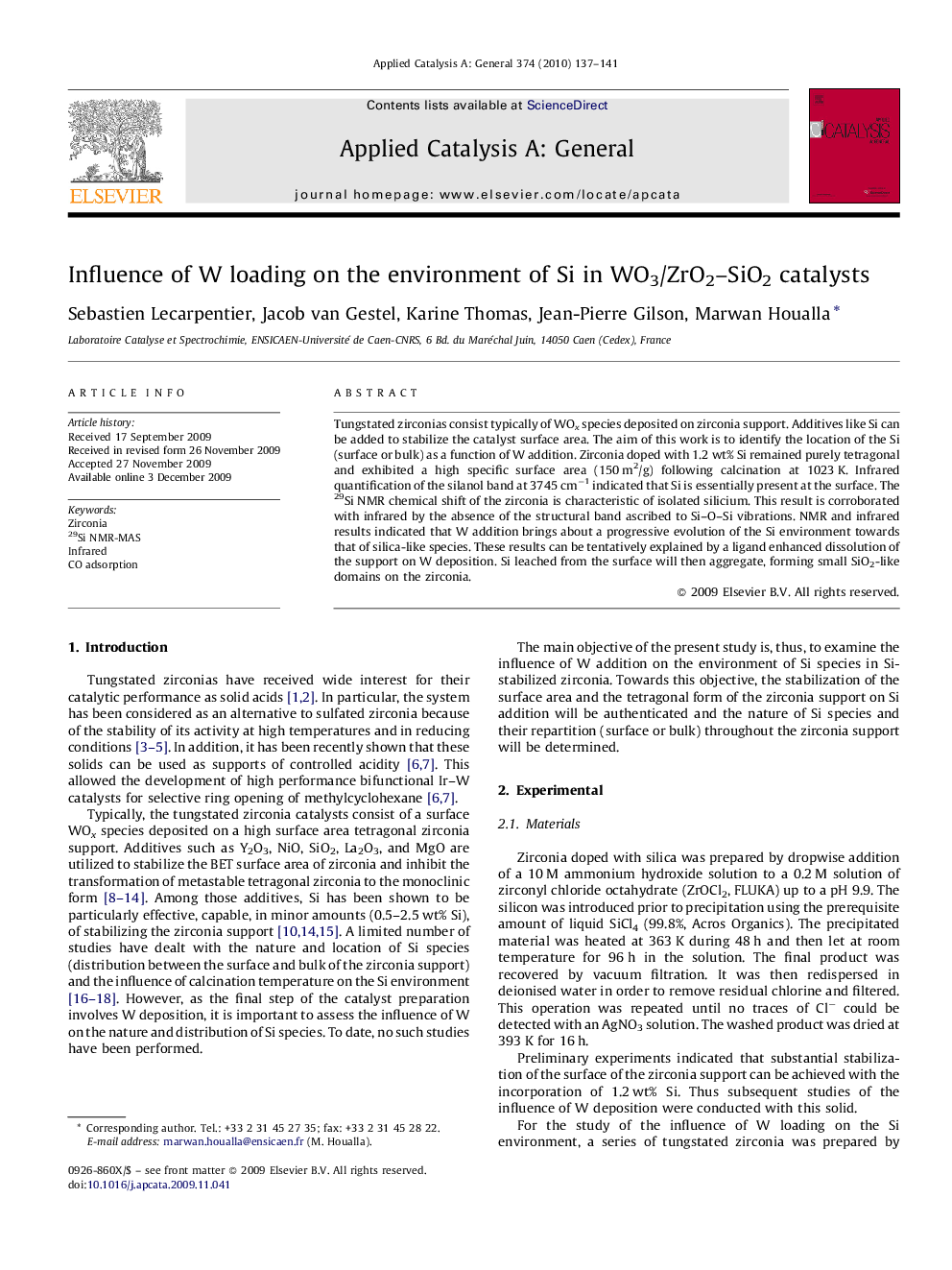| Article ID | Journal | Published Year | Pages | File Type |
|---|---|---|---|---|
| 42146 | Applied Catalysis A: General | 2010 | 5 Pages |
Tungstated zirconias consist typically of WOx species deposited on zirconia support. Additives like Si can be added to stabilize the catalyst surface area. The aim of this work is to identify the location of the Si (surface or bulk) as a function of W addition. Zirconia doped with 1.2 wt% Si remained purely tetragonal and exhibited a high specific surface area (150 m2/g) following calcination at 1023 K. Infrared quantification of the silanol band at 3745 cm−1 indicated that Si is essentially present at the surface. The 29Si NMR chemical shift of the zirconia is characteristic of isolated silicium. This result is corroborated with infrared by the absence of the structural band ascribed to Si–O–Si vibrations. NMR and infrared results indicated that W addition brings about a progressive evolution of the Si environment towards that of silica-like species. These results can be tentatively explained by a ligand enhanced dissolution of the support on W deposition. Si leached from the surface will then aggregate, forming small SiO2-like domains on the zirconia.
Graphical abstractThe location of Si species (surface or bulk) added to stabilize the surface area of tungstated zirconia and their degree of aggregation, were studied as a function of W addition. NMR and infrared results indicated that W addition brings about a progressive evolution of the Si environment towards that of silica-like species.Figure optionsDownload full-size imageDownload high-quality image (68 K)Download as PowerPoint slide
